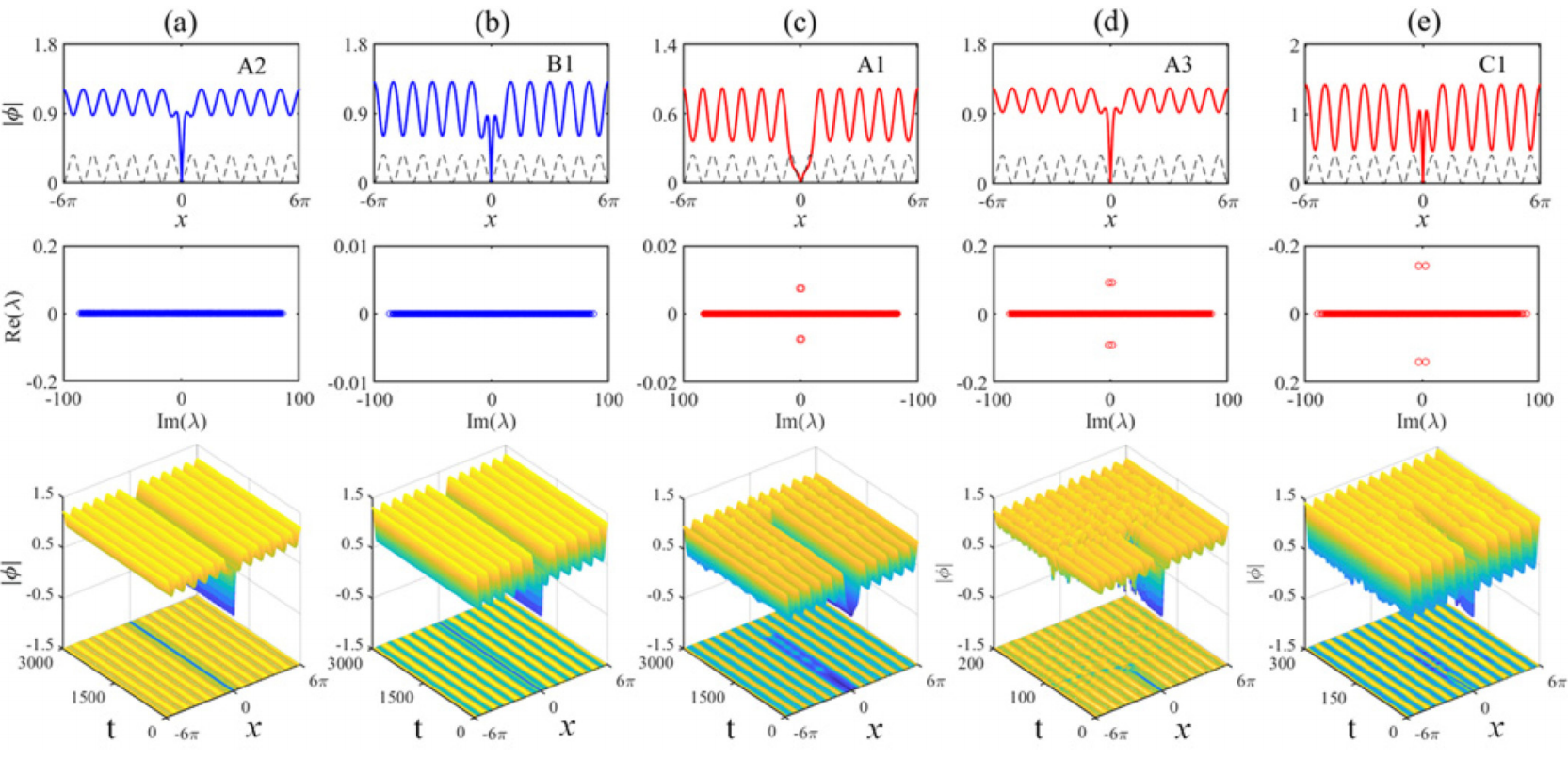Bose-Einstein condensates (BECs), created in ultracold bosonic atoms and degenerate quantum gases, are a macroscopic quantum phenomenon and thus can be considered as a single particle in mean-field theory. By preparing the BECs or ultracold atomic gases onto optical lattices, the existence of nonlinear matter waves and their dynamics, and simulate the condensed-matter physics can be detailly investigated.
Optical lattices have been a versatile toolbox to control Bose-Einstein condensates (BECs) recently, and a wealth of emergent nonlinear phenomena have been found, including bright gap solitons and dark ones. However, the dark localized gap modes with a central dip, have not been well understood yet. In particular, the formation and property of dark gap solitons and how to stabilize them in dense BECs with quintic nonlinearity are still unclear. Are there any methods to explore the dark gap solitons?
A research team led by Prof. Dr. ZENG jianhua from Xi'an Institute of Optics and Precision Mechanics (XIOPM) of the Chinese Academy of Sciences (CAS) theoretically explore an open issue of creating stable matter-wave dark gap solitons in a one-dimensional optical lattice. The results were published in PHYSICAL REVIEW A.
 Profiles, linear-stability spectra, and evolutions for 1D stable and unstable dark gap solitons. (Image by XIOPM)
Profiles, linear-stability spectra, and evolutions for 1D stable and unstable dark gap solitons. (Image by XIOPM)
According to the researchers, the principle of linear-stability analysis solved by means of the finite-difference method is utilized to verify that the stability of the so-found dark gap soliton solution requires only pure imaginary eigen-values. Moreover, the stability property of the dark gap solitons is also further checked in direct numerical simulation of the perturbed solutions.
In this research, two families of dark gap solitons, including the fundamental solitons and soliton clusters, optical lattices possessing shallow, medium shallow, and moderately deep lattices are found and their stability and instability regions in the underlying linear band-gap structures are identified utilizing linear-stability analysis and direct perturbed simulations.
The stability regions for both fundamental dark gap solitons and soliton clusters within the first band gap are narrow at a shallow lattice and become wider when increasing lattice depth, while both classes of dark gap modes cannot be stabilized in the second band gap. On the contrary, the dark gap solitons lying in the second gap predicted in dilute BECs with repulsive atom-atom interactions can be stable objects.
The results provide further insight into the unobserved dark gap modes in the fifth state of matter—the BEC, driving the development of soliton studies in the theoretical and experimental communities in BEC.
Download: